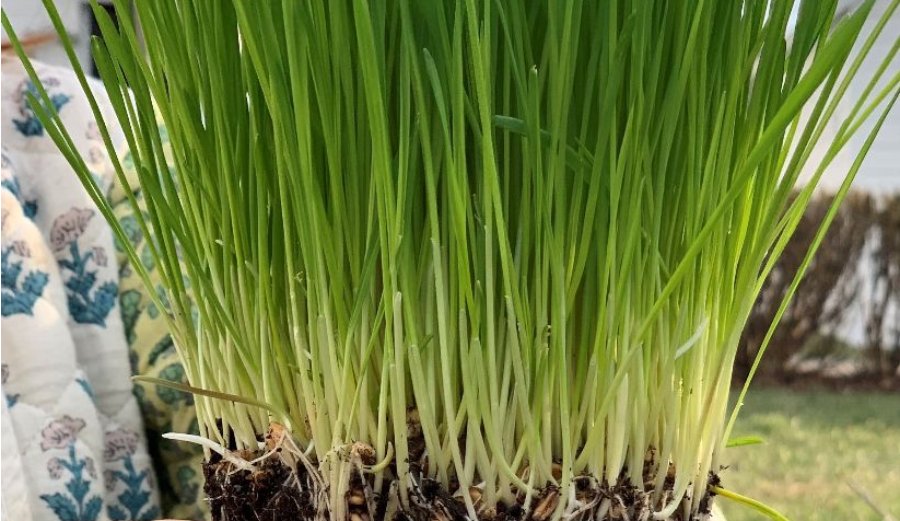Now the green blade riseth, from the buried grain,
Wheat that in dark earth many days has lain;
Love lives again, that with the dead has been:
Love is come again like wheat that springeth green.
John Macleod Campbell Crum
Spring brings the gift of renewal. One tradition that has been a part of our
early childhood curriculum is the planting of wheat grass with the little ones. There is still wonder that in the passage of a week those little grains transform into green blades stretching up to the sun. When drops of water, sitting like tiny diamonds on the green blades, appear in the early morning, the children call out to each other to share in the discovery. So present in the moment, they touch on something eternal. As adults, to return to such a state is healing... yet how to achieve this?
How is it that a plant lives within the seed? Though science seeks to solve the mysteries of nature, does it really? The wonder in a child’s eyes as they behold the sprouting of a seed holds truth of our human connection to creation. This stands parallel with all of the explanations of DNA that rational logic has uncovered in our human journey on this earth. Wonder is the starting place of inquiry―a holy state in itself. Rachel Carson wrote, “A child’s world is fresh and new and beautiful, full of wonder and excitement. It is our misfortune that for most of us that clear-eyed vision, that true instinct for what is beautiful and awe-inspiring, is dimmed and even lost before we reach adulthood. If I had influence… I should ask that a gift to each child in the world be a sense of wonder so indestructible that it would last throughout life, as an unfailing antidote against the boredom and disenchantment of later years … the alienation from the sources of our strength.”
Written by Janene Ping, Early Childhood Chair







